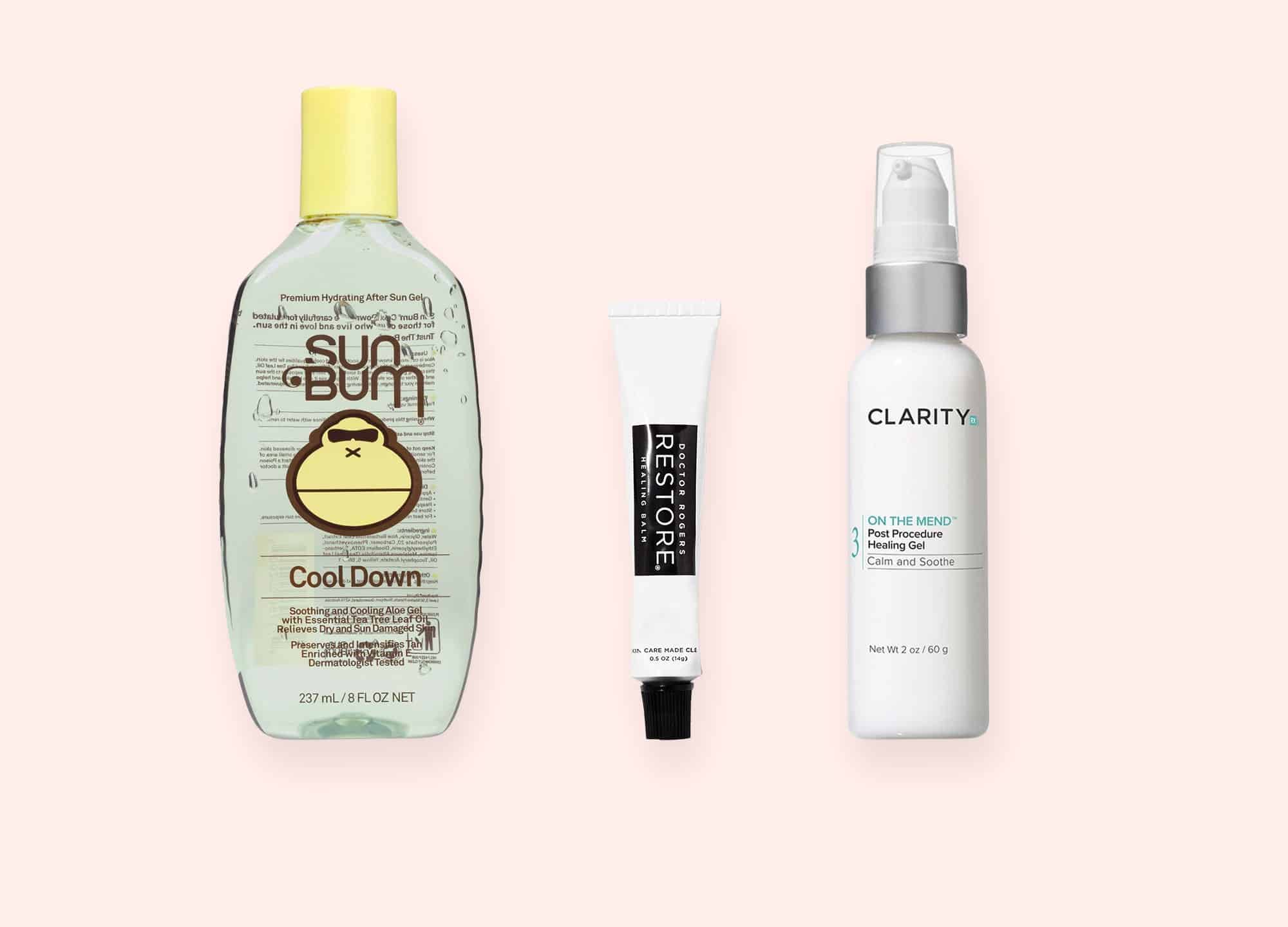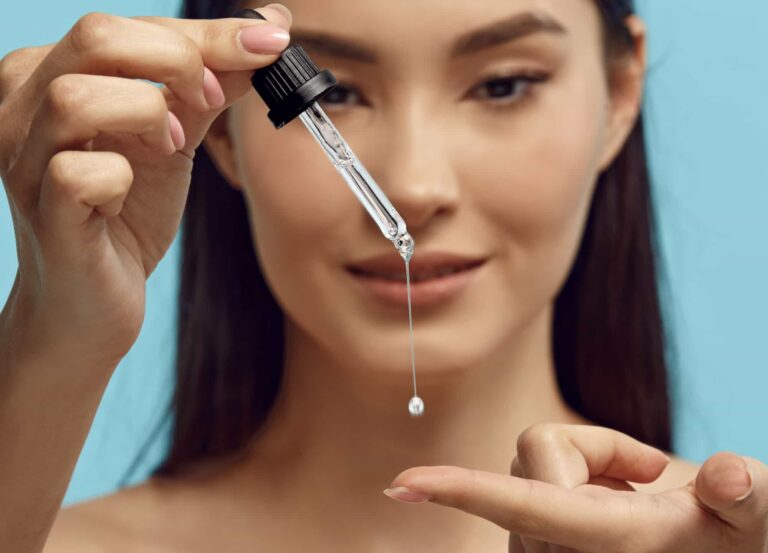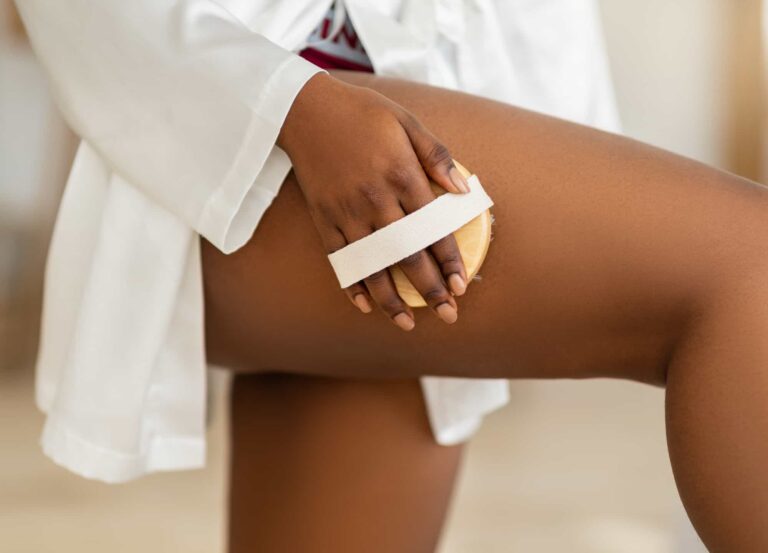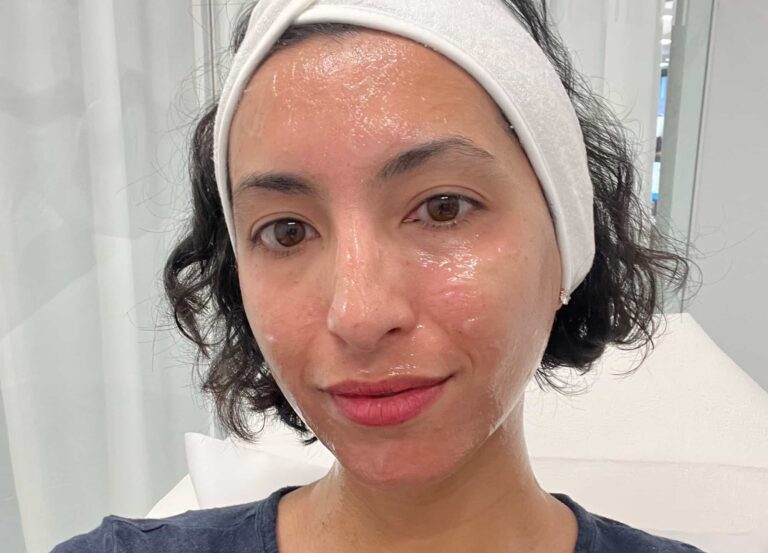We’ve said it ten thousand times: wearing a broad-spectrum sunscreen with at least SPF 30 every single day is a skin-care nonnegotiable. Wearing a hat and protective clothing, seeking shade, and reapplication are also paramount sun safety behaviors, even more so in situations when you’re spending prolonged time outdoors. All that being said, sunburns still happen—and how you proceed after the fact can make a big difference in the future health of your skin. Here, top dermatologists weigh in on what to do after sunburn, including three of the biggest post-burn no-nos, plus the best soothing and reparative products to reach for when you’re red.
What happens when you get a sunburn
The sun emits both UVA and UVB rays. UVA rays are the same strength year-round, can travel through glass, and are the primary culprits responsible for signs of skin aging. On the other hand, UVB rays are stronger during the summer and in the middle of the day, and they’re the ones that cause burning, says New York City board-certified dermatologist Dr. Doris Day. “UVB rays have a shorter wavelength than UVA rays, so they penetrate just deep enough to disrupt the skin cells that are within the various layers of the epidermis—the squamous cell layer, the basal cell layer, and the stratum corneum,” she explains. (FYI, any type of unprotected sun exposure to either type of UV light both causes skin damage and increases the risk of skin cancer.)
When unprotected skin is exposed to an onslaught of UVB rays, it kicks melanocytes, pigment-producing cells that live in the basal cell layer, into overdrive. They produce more pigment (what we see as a tan), as a defense mechanism; the melanin sits over the DNA of the skin cells, to protect it from damage, explains Dr. Day. In the case of red burns, there’s so much sun damage that it essentially fries the skin cells, eliciting a cascading inflammatory response that results not only in the redness but also pain and even blistering. In short, “A sunburn is your body’s way of telling you to get out of the sun, now,” says Dr. Day. The problem is, by the time that redness is visible, it’s too late to prevent damage.
What to do after sunburn
Go into repair mode at the first sign of a sunburn
In the immediate aftermath, cold compresses and cool showers or cool baths are your best bet, as is taking an oral anti-inflammatory, such as ibuprofen or aspirin, says Dr. Onyeka Obioha, a board-certified dermatologist in Los Angeles. (The former will help to bring down the temperature of the skin; the latter will address the occurring systemic inflammation.)
You can also apply a topical over-the-counter hydrocortisone cream on the affected area, to further help reduce swelling, suggests Dr. Kenneth Mark, a board-certified dermatologist in New York City. Particularly if it’s a severe sunburn, pair the oral meds with the hydrocortisone for the first 48 hours, then switch to more soothing, healing, hydrating topical products, he says.
Resist the urge to pop blisters
“If you’ve developed a blister, you’ve actually suffered a second-degree burn,” points out Dr. Obioha. “It means there’s been damage not only to the superficial epidermal layer but also to the deeper dermal layer, all caused by the UV rays that triggered rapid inflammation,” she explains. Blisters associated with this type of bad sunburn can be super-painful (again, this is where an OTC oral anti-inflammatory pain reliever is helpful), but don’t pop them, as tempting as it may be. The fluid inside the blisters is full of growth factors and other components that help to speed the healing process, and popping them will only delay this, says Dr. Day. Not to mention that it also leaves the skin open and vulnerable to infection. According to Dr. Obioha, as long as you don’t pop them, blisters should usually heal within 48 hours to one week.
Don’t peel off skin
Skin peeling occurs after a sunburn for a few reasons. “The peeling can be a physiological response to the prior swelling and increased pressure that was put on the skin,” says Dr. Mark. It’s also a manifestation of just how dehydrated skin is after a sunburn; it’s so dry that it simply starts to flake off, adds Dr. Day. And while it can be very challenging to maintain a hands-off approach, you absolutely should not pull, peel, or otherwise pick at the flakes. The skin will fall off on its own, once it’s ready.
“Peeling skin prematurely exposes the vulnerable skin underneath that’s not yet ready to be exposed,” cautions Dr. Corey L. Hartman, a board-certified dermatologist in Homewood, Alabama. Once that new layer has completely reepithelialized, the old, flaking skin will fall off on its own, but removing it before then prolongs the healing time, leaves you prone to infection, and even increases the risk of scarring, he adds. If there are huge chunks of skin hanging off, you can clip the edges—but don’t pull or peel. Similarly, don’t try to scrub off flaking skin.
How to heal sunburn
Reach for your simplest skin-care products
All the dermatologists we spoke with underscore the fact that post-sunburn, it’s important to take a step back from your usual skin-care routine. More specifically, this means forgoing harsh actives, particularly those that have an exfoliating effect and a potential for irritation, such as retinoids, alpha hydroxy acids, and vitamin C, notes Dr. Hartman. (In related news, avoid using benzocaine on sunburned skin, as it can cause irritation or even an allergic reaction.)
Your best bet to treat sunburn? Soothing, moisturizing ingredients and formulas that will not only make the skin feel better but also rehydrate the skin. Keep things streamlined and minimal until your skin is fully healed. “This can take anywhere from one to two weeks, although the face does tend to heal faster than the skin on the body,” says Dr. Day.
Sun Bum Cool Down Aloe Hydrating After Sun Gel ($9.99)
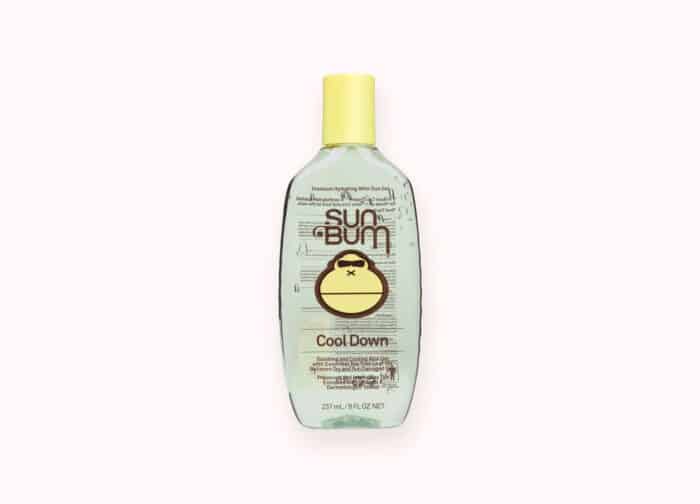
There’s a good reason aloe vera is everyone’s post-sun go-to: “Aloe is anti-inflammatory, is soothing, and is an antioxidant,” says Dr. Mark. In short, it both does good things for your skin and makes it feel good, almost instantly. In this formula, it’s combined with vitamin E, another antioxidant Dr. Hartman says is good to use after a burn.
Doctor Rogers Restore Healing Balm ($30)
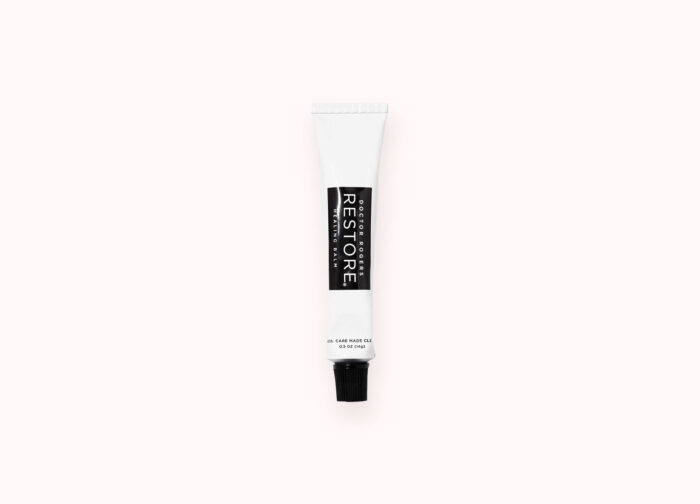
This rich balm, a nice alternative to petroleum-derived options, contains glycerin, a choice ingredient to help draw water into dehydrated, burned skin. It’s combined with castor seed oil, which softens and smooths skin, and further helps seal in that much needed hydration, making it another good sunburn treatment.
ClarityRx On the Mend Post Procedure Healing Gel ($38)
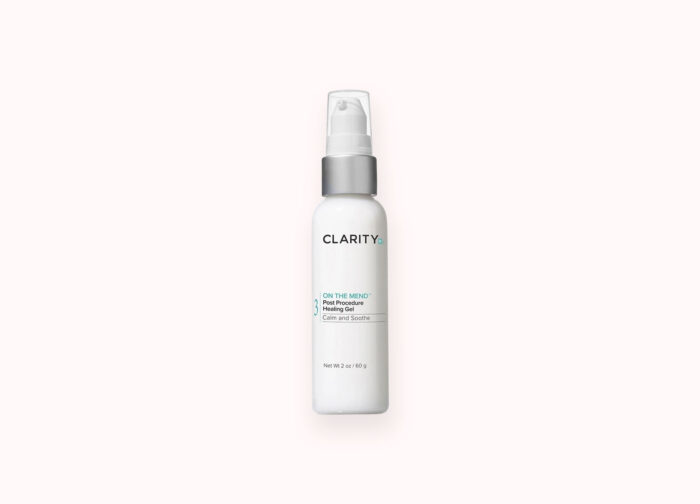
There are a lot of similarities between post-procedure skin and sunburned skin—both can be equally fragile and irritated. Enter this pick, an innately cooling gel that combines the derm-loved aloe with other skin-soothing, healing ingredients, such as calendula and St. John’s wort.
Elina Organics Sea Buckthorn Healing Lotion ($28)
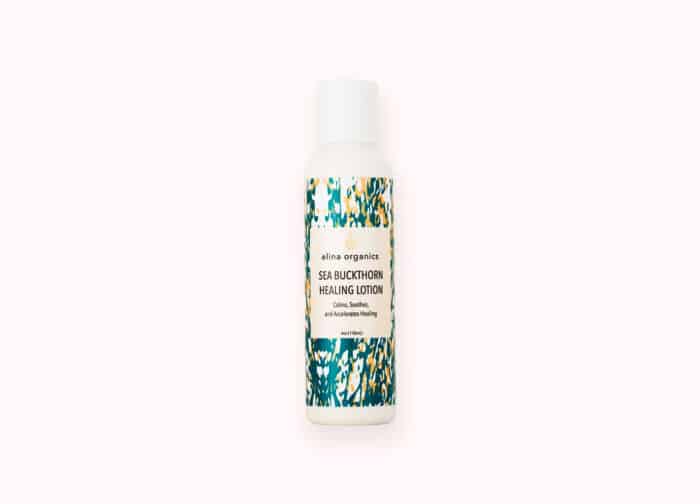
A good choice for either your face or body, this contains aloe vera and calendula alongside a hefty dose of sea buckthorn, a potent antioxidant that can help combat free radical damage and is, in and of itself, naturally soothing.
Embryolisse Lait Crème Sensitive ($30)
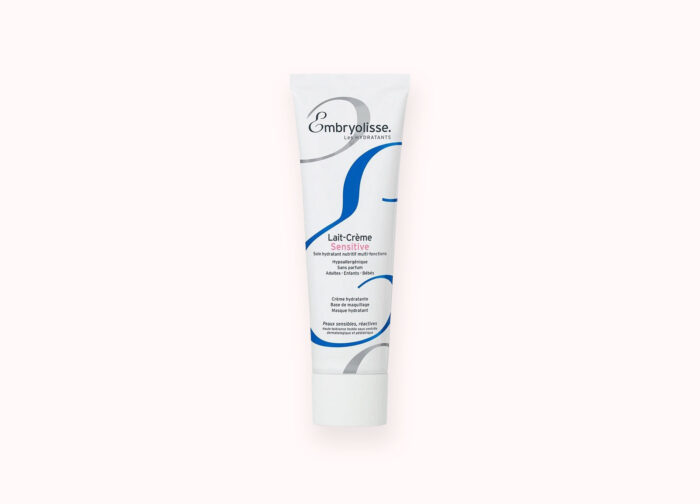
This too boasts aloe vera, along with shea butter, one of the moisturizing ingredients Dr. Day says is ideal post-sunburn. This is the sensitive variant of the brand’s original cream, a formula that’s free of fragrance and other potential irritants, making it a great choice for those dealing with sunburned skin.
Kinfield Sunday Spray Cooling Aloe Mist ($22)
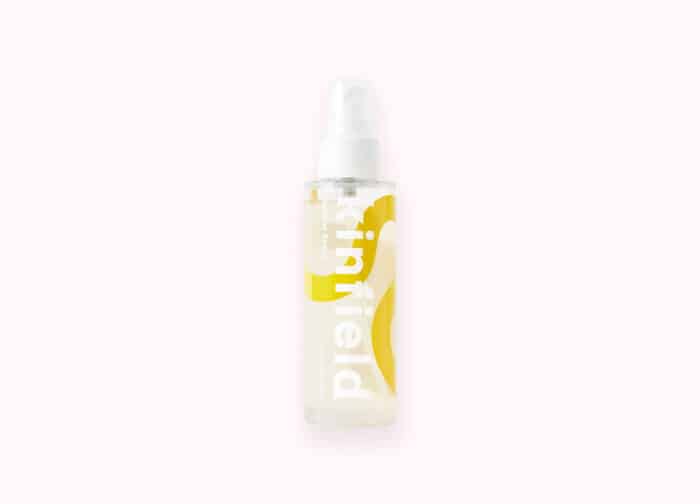
Another choice aloe-based option, this comes in an easy-to-use spritz format that’s especially choice for your face. It’s also not in the least bit sticky or goopy, and contains ingredients such as spearmint and eucalyptus that make it feel extra refreshing. Up the ante even further by keeping it in the fridge.







